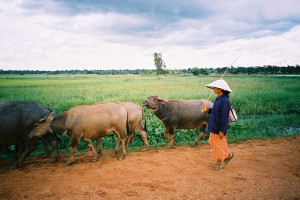 The economy of Thailand remains in the doldrums as merchandise export and manufacturing production levels both declined in May, according to Bank of Thailand (BOT).
The economy of Thailand remains in the doldrums as merchandise export and manufacturing production levels both declined in May, according to Bank of Thailand (BOT).
In an official release, the country’s central bank said Thai economic recovery continues to be “slow and fragile,” with growth driven mainly by tourism and public spending on capital expenditure.
Merchandise exports in May remained sluggish owing to the slowdown of the economies of China and the Association of Southeast Asian Nations (ASEAN), coupled with fragile economic recovery in major trading partners, especially the U.S., Japan, and Europe.
Overall, the value of merchandise exports, except for agricultural exports, declined markedly from the same period last year across the board, said BOT.
At the same time, subdued domestic and foreign demand led to low manufacturing production in both domestic-oriented and export-oriented industries.
Moreover, BOT noted that businesses were cautious in undertaking new investments, particularly in purchasing machinery and equipment despite lower costs following the policy rate cut.
“As a result, private investment indicators declined from the previous month following a significant contraction in imports of capital goods and a decrease in commercial car sales partly as a result of awaiting new car models,” it added.
Construction investment also remained flat.
Merchandise imports contracted across all categories. Imports of capital and consumer goods decreased in line with weak private spending, while imports of raw materials (excluding crude oil) dropped owing to low production.
The bright spots were tourism and public spending. Tourism continued to expand, thanks mostly to an increase in the number of Chinese and Malaysian tourists and the improving number of tourist arrivals from Russia. Public spending, particularly on capital expenditure for transportation and irrigation, continued to expand following contractual obligation bound in the earlier period.
Overall, Thailand’s balance of payments continued to record a surplus, and the ratio of international reserves to short-term external debt remained high, said the bank.
Indonesia’s factory output falls
As this developed, Thailand’s ASEAN neighbor Indonesia reported a continued contraction in its manufacturing activity in June. This marks the ninth consecutive month that the country’s manufacturing sector contracted, according to reports.
The Nikkei/Markit purchasing manager’s index (PMI) rose slightly to 47.8 in June 2015 from 47.1 in May, implying that the sector contracted at a slower pace but remained well below the level of 50 that separates contraction from expansion.
Contraction continued due to persistent declines in new orders and production.
In the second quarter of 2015, Indonesia’s PMI averaged 47.2, the lowest quarterly reading since the index was started in early 2011. The persistence of a contracting manufacturing industry may be a sign on the wall that the country’s GDP growth is likely to have slowed further in the second quarter of 2015, experts said.
In the first quarter, Indonesia’s economy grew at a six-year low of 4.71% year-on-year.
Photo: Takeaway





